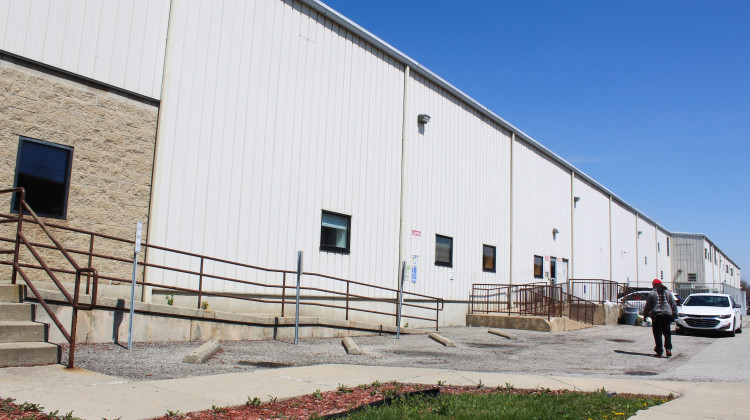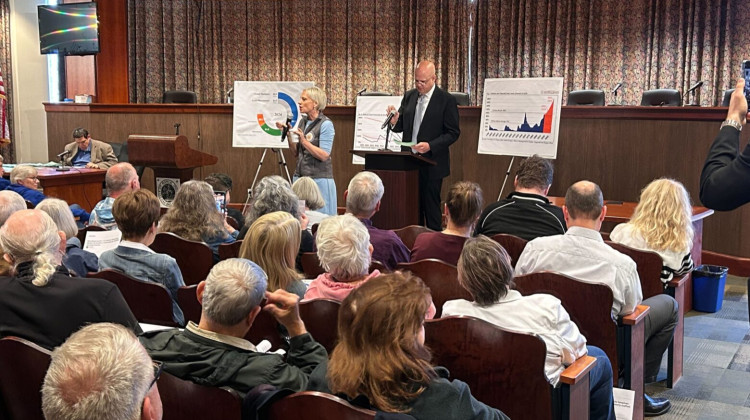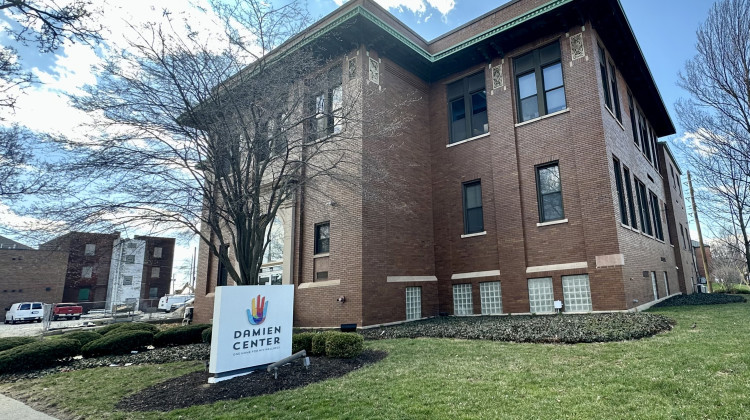
Keesha Daniels advocates for Calumet residents with state and national NAACP leaders the day EPA Administrator Scott Pruitt visted East Chicago. Pruitt was invited to the NAACP meeting, but declined to attend.
Annie Ropeik/IPB NewsKeesha Daniels just moved from one lead contaminated neighborhood to another.
Both her new house and her old West Calumet Housing Complex apartment sit within East Chicago’s USS Lead Superfund site. The city is tearing down her old home because of extremely high levels of lead in the soil. So she had to move.
Daniels is still unpacking. Most rooms have a pile of boxes stacked tidily in a corner. Two heavy dressers sit in one otherwise empty room — her sons are coming later to move them. As Daniels takes me on a tour of her new house, she offers me some water.
“It’s bottled water,” she says with a laugh. A water filter hangs pointedly from her kitchen faucet.
Despite progress at the state and federal levels, many East Chicago residents, such as Daniels, are frustrated with the public officials in charge of cleaning up the lead contaminated neighborhood.
The Environmental Protection Agency told Daniels and her sons that her new front yard is lead free. The government offered to move the family off the superfund site, to Chicago, but Daniels didn’t like that option.
“I’m still worried about everything; we’re still doing the bottled water a lot,” Daniels says. “I just feel safer in East Chicago. I was born and raised here, so I’ve been here 40 plus years, so I’m kind of nervous about going some place else.”
Like Daniels, most West Calumet residents have moved now. That’s Zone 1 of the Superfund, it tested for the highest lead levels. But she also says residents in the other two zones have a lot left to fight for, even though they aren’t being relocated.
“So now, the struggle still continues, because I still have family in [Zone] 2 and I live in [Zone] 3,” says Daniels. “It’s not going to stop just because I moved out of Zone 1.”
Daniels really hasn’t stopped. In the past month she’s had her bones tested for lead (she doesn’t know results yet), she traveled to Washington, D.C. to advocate for lead-free housing, and she met with state leaders and EPA Chief Scott Pruitt.
Hours before that meeting, Tyra Taylor stands on her porch, watching a group of activists march for clean air and water in East Chicago.
Hours before that meeting, Tyra Taylor stands on her porch, watching a group of activists march for clean air and water in East Chicago.
Taylor’s yard, running down the side of her house, laid in disarray that day. Bushes and mounds of dirt surround the excavator, which digs out contaminated soil and replaces it with clean soil.
“So today’s my day to get dug up,” Taylor says. “See they even brought a whole machine in here, I didn’t even notice that.”
A letter sent to her by the EPA explains that sampling results from her yard showed lead or arsenic concentrations above the limit the federal government considers safe.
Taylor says she’s grateful her yard is being remediated, but she’s far from satisfied. She says more crews are needed to do the work faster.
While residents who met with Pruitt that day say officials didn’t relay specific plans for the future, it does sound like Taylor’s wish might come true.
Speaking with reporters after Pruitt’s press conference – Pruitt only gave a brief statement; no questions – Regional EPA Administrator Robert Kaplan said they would be doing more work, faster.
“So the most important aspect is getting out into the field earlier, and that’s what we did, and committing to more residents being done, and that’s what we did as well,” says Kaplan.
Officials are continuing to make progress:
- Most recently, the city reached an agreement with the state to begin replacing lead drinking water pipes.
- Gov. Eric Holcomb issued an emergency declaration for the city.
- State lawmakers appropriated money for more water and soil testing within the Superfund site.
On the other hand, an investigation by the Northwest Indiana Times found evidence that there’s lead paint dust surrounding homes reserved for people moving out of lead contaminated Zone 1.
Both Keesha Daniels and Tyra Taylor say the Calumet neighborhood used to be a tight-knit community. But they feel isolated now, like their lives have been turned upside down. Daniels says $1,000 and a Section 8 voucher aren’t enough to replace family.
And Taylor says she continues to be frustrated because residents have to deal with lead contamination every hour of every day, and they’ve been doing it for decades.
“You know, they’re having meetings and people coming in from out of town, senators, you know, whatever — that’s fine,” Taylor says. “But then you go on, you have to go back to the rest of what’s on your desk. You know, we are just in a pile. We are a pile of paperwork.”
 DONATE
DONATE








 Support WFYI. We can't do it without you.
Support WFYI. We can't do it without you.